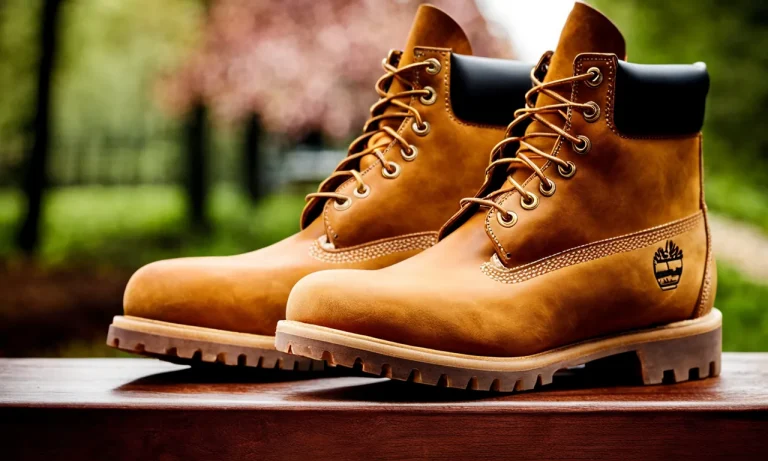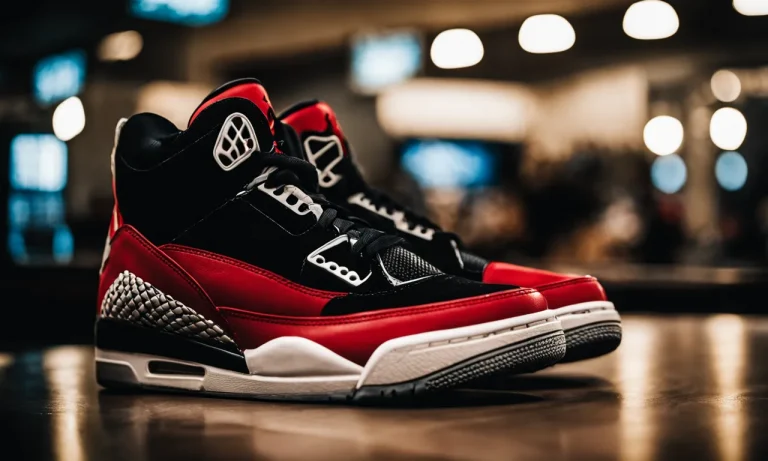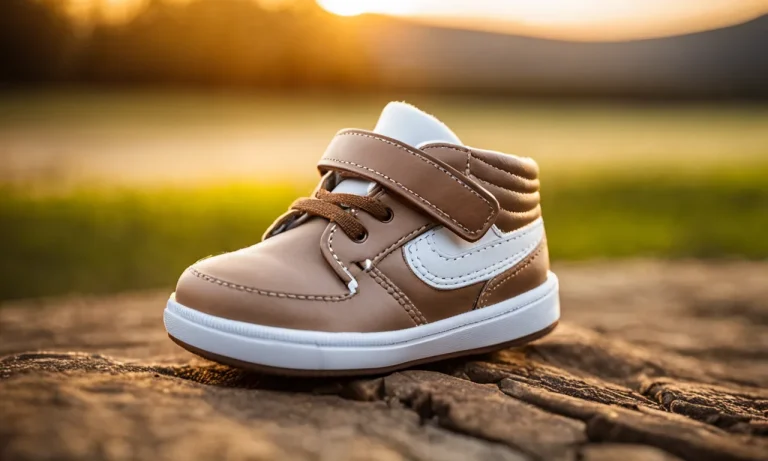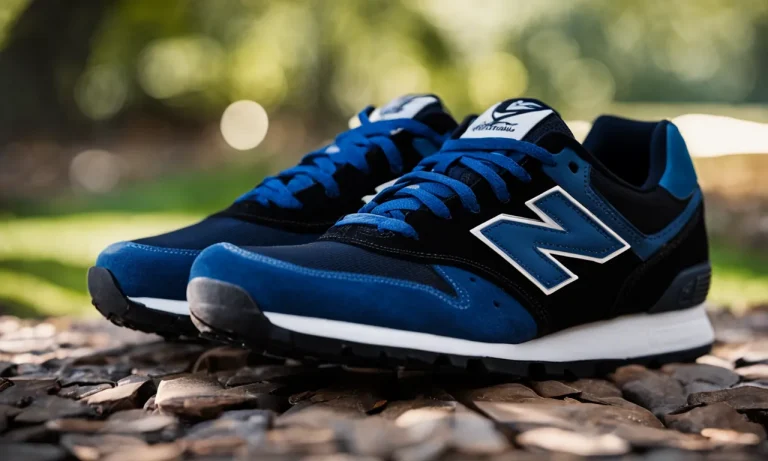If you’ve ever seen someone wearing shoes with an air pocket in the heel or sole, you’ve likely wondered – what are those? The answer is pump shoes, a type of athletic footwear with compartments that can be filled with air for added cushioning and bounce.
If you’re short on time, here’s a quick answer to your question: Pump shoes are a type of athletic footwear that have pockets built into the soles which can be filled with air through a valve to adjust cushioning and bounce.
The air pockets provide shock absorption and energy return while running, jumping, and doing other sports. Major brands like Reebok and Nike have popular pump shoe models.
This article will provide a comprehensive overview of pump shoes, including the history, unique features, major brands, pros and cons, and how the technology works. We’ll also look at the different types of pump shoes, from vintage models of the 1990s to modern styles equipped with contemporary features and tech.
The Origins of Pump Shoes and How the Trend Took Off
Pump shoes are a unique type of footwear that gained popularity in the late 1980s and early 1990s. They are characterized by a small pump mechanism located in the shoe’s tongue or heel, allowing the wearer to inflate or deflate the shoe for a customized fit.
This innovative technology was first introduced by Reebok with their release of the original Reebok Pump model in 1989.
The Original Reebok Pump Model in 1989
The Reebok Pump was a groundbreaking sneaker that revolutionized the way people thought about athletic footwear. The shoe featured an inflatable chamber that could be manually pumped up using a small handheld pump.
This allowed wearers to adjust the fit of the shoe to their liking, providing a level of comfort and support that was unmatched at the time. The Reebok Pump quickly became a sensation, attracting attention from athletes and fashion enthusiasts alike.
Other Early Pump Shoe Releases in the 1990s
Following the success of the Reebok Pump, other shoe manufacturers jumped on the bandwagon and released their own versions of pump shoes. Companies like Nike, Puma, and LA Gear all introduced their own innovative designs that incorporated the pump technology.
These shoes not only offered a customizable fit but also became a fashion statement, with bold colors and unique designs capturing the attention of consumers.
The Resurgence of Pump Technology in the 2000s and Beyond
After a brief decline in popularity in the late 1990s, pump shoes made a comeback in the 2000s and have continued to evolve ever since. With advancements in technology, pump shoes now offer even more features and benefits.
Some models include built-in sensors that automatically adjust the shoe’s fit based on the wearer’s movements, providing optimal support and comfort. Additionally, pump shoes have expanded beyond the athletic realm and are now available in various styles, including casual and dress shoes.
The resurgence of pump technology can be attributed to the constant demand for innovative and comfortable footwear. As people become more conscious of the importance of proper foot support and the impact it has on overall health, pump shoes have become a popular choice.
Whether it’s for athletic performance or everyday wear, pump shoes offer a unique blend of style and functionality that continues to captivate consumers.
What Makes Pump Shoes Unique? The Air Pockets and Pumping System
Pump shoes are a unique type of footwear that stands out for its innovative design and functionality. These shoes are equipped with a special inflation mechanism that allows the wearer to customize the fit and feel of the shoe.
This mechanism consists of air pockets and a pumping system, which work together to provide a comfortable and supportive fit.
Inflation Mechanism with Pump
One of the key features that set pump shoes apart is their inflation mechanism. This mechanism allows the wearer to adjust the tightness of the shoe to their preference. By simply pressing a button or squeezing a small pump located on the shoe, air is pumped into the air pockets within the shoe, creating a snug fit around the foot.
This inflation mechanism provides a level of customization that is not found in traditional lace-up or slip-on shoes.
Cushioning Air Pockets in Heel and Forefoot
Another unique aspect of pump shoes is the presence of cushioning air pockets. These air pockets are strategically placed in the heel and forefoot areas of the shoe to provide enhanced comfort and support.
When the shoe is inflated, the air pockets fill up, creating a cushioning effect that helps to absorb impact and reduce pressure on the feet. This cushioning not only improves overall comfort but also helps to prevent foot fatigue and discomfort during prolonged wear.
Customizable Fit and Bounce
One of the main benefits of pump shoes is the ability to achieve a customizable fit. With traditional shoes, finding the perfect fit can be a challenge, as individual foot shapes and sizes can vary. However, with pump shoes, the inflation mechanism allows for a personalized fit that conforms to the unique shape of the wearer’s feet.
This customizable fit not only enhances comfort but also improves stability and performance.
Additionally, pump shoes offer a unique bounce that is not found in other types of footwear. The air pockets within the shoe provide a spring-like effect, giving the wearer an added boost with each step.
This bounce not only adds a fun and energetic element to walking or running but also helps to reduce the impact on joints, making pump shoes an excellent choice for those with joint or foot pain.
Popular Pump Shoe Models From Leading Athletic Brands
Reebok Pump Models Over the Years
When it comes to pump shoes, Reebok has been a pioneer in the industry. One of their most iconic models is the Reebok Pump, which was first introduced in 1989. The Reebok Pump features a unique inflatable air bladder that allows wearers to customize the fit of the shoe.
With a few quick pumps, the shoe molds to the foot, providing a snug and comfortable fit. Over the years, Reebok has released several iterations of the Pump, each one incorporating new technologies and design elements to enhance performance and style.
Some popular Reebok Pump models include the Reebok Pump Omni Lite, Reebok Pump Fury, and Reebok Pump Shaq Attaq.
Nike Air Pressure Models Like the Air Max and Air Attack
Nike is another leading athletic brand that has embraced the pump technology in their shoe designs. While Nike may not have a specific line of shoes dedicated to pump technology like Reebok, they have incorporated it into some of their popular models.
For example, the Nike Air Max series features an air cushioning system that provides excellent support and cushioning. Similarly, the Nike Air Attack utilizes a pump system to provide a customized fit and added stability.
These models have gained popularity among athletes and sneaker enthusiasts alike for their comfort and performance.
Pump Technology in Basketball Shoes
Basketball shoes have also seen the integration of pump technology to enhance performance on the court. Brands like Reebok and Nike have developed basketball-specific pump shoes that offer a combination of support, cushioning, and a customizable fit.
These shoes are designed to provide athletes with the ability to adjust the tightness of the shoe mid-game, allowing for optimal performance and preventing discomfort or injuries. With the pump technology incorporated into basketball shoes, players can focus on their game without worrying about their footwear.
For more information on popular pump shoe models and the latest innovations in athletic footwear, you can visit Reebok and Nike official websites.
The Advantages and Disadvantages of Wearing Pump Shoes
Pros: Cushioning, Shock Absorption, Energy Return
One of the main advantages of wearing pump shoes is the cushioning they provide. These shoes are designed with extra padding in the heel and forefoot areas, which helps to absorb impact while walking or running.
This cushioning not only provides a comfortable feel but also helps to reduce the strain on your joints and muscles, making them a great option for those with foot or leg pain.
Another benefit of pump shoes is their shock absorption capabilities. The materials used in these shoes, such as rubber or foam, are specifically chosen to absorb the shock generated with each step, protecting your feet and reducing the risk of injuries.
This is particularly beneficial for athletes or individuals who engage in high-impact activities.
Additionally, pump shoes are known for their energy return properties. The cushioning materials in these shoes have the ability to store and release energy with each step, providing a spring-like effect that can enhance your overall performance.
This can be particularly advantageous for runners or individuals participating in sports that require quick and explosive movements.
Cons: Heavy, Expensive, Air Leakage
One of the drawbacks of wearing pump shoes is their weight. Due to the extra cushioning and support they provide, pump shoes tend to be heavier than other types of footwear. This can be a concern for individuals who prefer lightweight shoes or need to minimize the weight on their feet for various reasons.
Another disadvantage of pump shoes is their cost. The advanced technology and materials used in these shoes often come at a higher price point compared to regular athletic or casual shoes. While pump shoes can provide exceptional comfort and performance benefits, they may not be the most budget-friendly option for everyone.
Lastly, some individuals have reported issues with air leakage in pump shoes. The pump mechanism used to adjust the fit of these shoes can sometimes develop leaks, causing air to escape and compromising the overall fit and support.
It’s important to choose a reputable brand and ensure proper maintenance to minimize the risk of air leakage.
The Mechanics Behind Pump Shoe Technology
Pump shoes have gained popularity in recent years due to their unique design and innovative technology. These shoes are equipped with air chambers in the midsole, which play a crucial role in providing a customized fit and enhanced comfort for the wearer.
Air Chambers in Midsole and Construction
One of the key features of pump shoes is the presence of air chambers in the midsole. These chambers are strategically placed to provide targeted support and cushioning. The air chambers are usually made from durable materials such as rubber or polymer, ensuring their longevity and ability to withstand pressure.
By incorporating air chambers into the shoe’s construction, pump shoes can adapt to the unique shape and contours of the wearer’s foot. This allows for a more personalized fit, reducing the risk of discomfort or injuries while walking or running.
Adding or Releasing Air Pressure Through Valve
The air chambers in pump shoes can be adjusted to meet the specific needs and preferences of the wearer. This is made possible through a small valve located on the shoe’s exterior. By pressing the valve, air can be added or released from the chambers, altering the overall pressure within the shoe.
This adjustable air pressure feature allows individuals to customize the level of support and cushioning they desire. Whether you prefer a softer feel or a firmer support, pump shoes can be easily adjusted to accommodate your preferences.
Maintaining Air Pressure Over Time
One of the concerns often associated with pump shoes is the potential loss of air pressure over time. However, advancements in technology have addressed this issue. Modern pump shoes are designed to maintain air pressure for extended periods, ensuring consistent comfort and support throughout wear.
Manufacturers have implemented innovative solutions to minimize air leakage and maximize the lifespan of pump shoes. This ensures that the shoes remain functional and provide the desired level of comfort for an extended period, without the need for frequent adjustments.
It is important to note that regular maintenance and care are still necessary to ensure the longevity of pump shoes. Checking the air pressure periodically and addressing any signs of air leakage can help prolong the lifespan of these unique footwear.
Variations of Pump Footwear Over the Years
Since its inception, the pump shoe has gone through several transformations to cater to different sports and fashion trends. Let’s take a closer look at some of the notable variations of pump footwear over the years.
90s High Top Basketball Models
In the 1990s, pump shoes gained popularity among basketball players, thanks to their ability to provide customized fit and support. Brands like Reebok introduced high-top basketball models with built-in pump technology, allowing players to adjust the fit around their ankles.
This innovation not only enhanced performance but also became a style statement on and off the court.
Low Top and Minimalist Running/Training Styles
As the fitness industry evolved, so did the pump shoe. In recent years, we have seen the emergence of low-top and minimalist pump shoes designed specifically for running and training. These styles prioritize lightweight construction and flexibility, while still offering the benefits of adjustable fit.
Athletes and fitness enthusiasts have embraced these pump shoes for their versatility and comfort during intense workouts.
Contemporary Styles with Modern Tech
In today’s market, pump shoes have become more than just functional footwear. They have become fashion-forward statement pieces with modern technology integration. Brands like Nike and Adidas have introduced contemporary pump shoe styles that combine innovative materials, responsive cushioning, and personalized fit adjustments.
These shoes not only provide exceptional performance but also cater to the fashion-savvy consumer.
For more information on the evolution of pump footwear, you can visit Reebok’s official website or explore the latest releases on Nike’s online store.
Conclusion
Pump shoes remain an eye-catching, unique style of athletic footwear thanks to their inflatable air pockets. While early models were known for their distinctive high-top looks and inflatable basketball shoes, today’s pump shoes incorporate modern technology for lightweight performance.
The pump system provides adjustable cushioning, shock absorption, and energy return. However, pump shoes can be heavy and lose air pressure over time. Overall, pump shoes offer a customizable athletic shoe experience unlike any other footwear.






